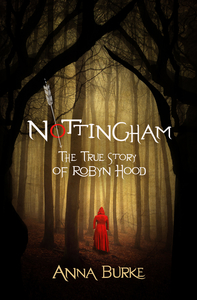Amazon Affiliate Link | Bookshop.org Affiliate Link
My recent infatuation with the Compass Rose series should have been all the warning I needed not to start an Anna Burke book just before bedtime. This dark, Grimm style and very gay retelling of “Beauty and the Beast” kept me reading well past midnight to get just “one more page!” Thorn, with its complex characters and their histories, goes so much further than just subbing in perpetually hungry wolves and a large ice bear for talking candles and singing teapots.
Burke does a great job with world building, and it doesn’t take long to get a sense of where you and our young protagonist, Rowan, have just been dropped. A very cold, very isolated place that one wouldn’t necessarily choose to live. Rowan’s father, a failed merchant turned aspiring fur trader, has had no choice but to flee the city with his three daughters and start a new life to escape his debts. While he’s not a villain by any means, he treats his children as commodities, and is preoccupied with returning to some status in society.
When we first meet Rowan, we see how different she is from her sisters. As the eldest, there’s a lot of pressure on her to take care of the family. It’s here we also find out that she’s betrothed to the neighbor’s son (let’s call him baby Gaston) and would very much prefer not to be. On top of it all, she absolutely hates living in this godforsaken, frozen little village. It doesn’t take long for us to get an idea that Rowan doesn’t love her homelife.
The Huntress, our cruel and mysterious “beast”, is something of a legend and a myth for those living in the nearby village. But she and the curse that keeps her confined to the mountain are very real. Winter isn’t just coming, it’s there all the time within the boundaries of her land. Our beast has been condemned to a life of solitude, and the cold and loneliness in the story are very much intertwined.
When a hunting party crosses the threshold of her lands and kills two of the Huntress’ wolf companions, Rowan’s father, one of the unfortunate trespassers, is spared by the Huntress only to commit the more serious crime of stealing a white rose. The Huntress doesn’t delay in retrieving her stolen property. Rose for a rose, thorn for a thorn.
I enjoyed the vivid descriptions Burke offers, and I haven’t been that creeped out by a flower since watching The Ruins. We see a lot of interesting imagery with the rose throughout the book, and some particularly unnerving scenes where the flower winds its way from one person and into another. Burke also does a great job getting to the heart of the characters’ relationships in a relatively short period of time. We see Rowan fighting to resist a growing attraction to her captor, and a reluctance to admit that this new life is as free as she’s ever been. We also catch glimpses of the Huntress’s past, and how this literal ice queen came to be cursed and live in an enchanted castle with her pack of four legged Hounds.
One of my favorite parts of this book, which made me laugh out loud, is an indulgent scene requiring the need for skin to skin contact for warmth — despite a perfectly serviceable hot spring in the basement of the castle. Thanks to Anna Burke for that fan service.
As usual, Burke’s prose is strong, and it particularly shines in this book. You will feel the cold in your bones. You will smell the musty old castle and its musky animal inhabitants, and taste the venison stew. The main characters are well developed, and we get to see both of their perspectives throughout the book. The big romance tropes here are age gap, ice queen and enemies to lovers. There is of course an iconic library scene, and an “it doesn’t matter now, just let them come” scene right before the curse is broken. While the general promise of happily ever after is fulfilled by our star crossed lovers staying together, we also feel the angst and pain of other consequences. And with that, Burke leaves us with a bit of her book’s winter chill.



 Anna Burke was the inaugural recipient of the Sandra Moran Scholarship from the GCLS Writing Academy and is currently pursuing an MFA in Creative Writing at Emerson College. Her queer feminist novel, Thorn, was named 2019 LGBTQ+ book of the year by Foreword Reviews. When she isn’t writing or reading, she can usually be found drinking tea or playing with her dogs.
Anna Burke was the inaugural recipient of the Sandra Moran Scholarship from the GCLS Writing Academy and is currently pursuing an MFA in Creative Writing at Emerson College. Her queer feminist novel, Thorn, was named 2019 LGBTQ+ book of the year by Foreword Reviews. When she isn’t writing or reading, she can usually be found drinking tea or playing with her dogs.